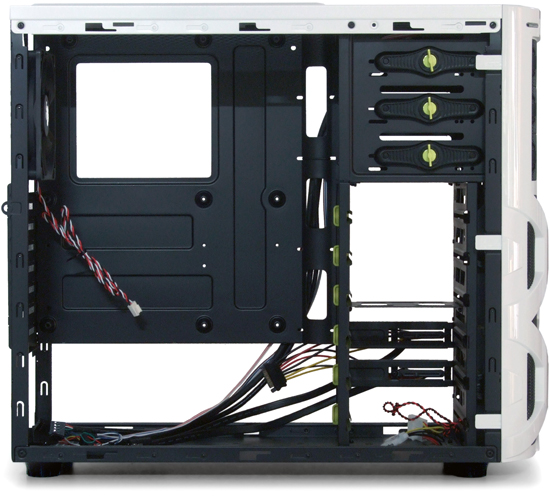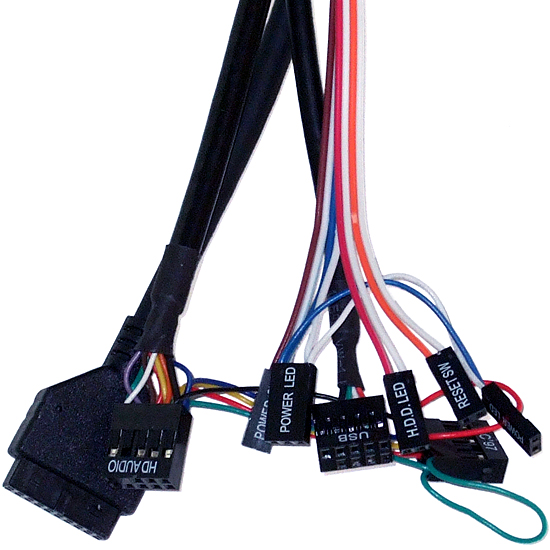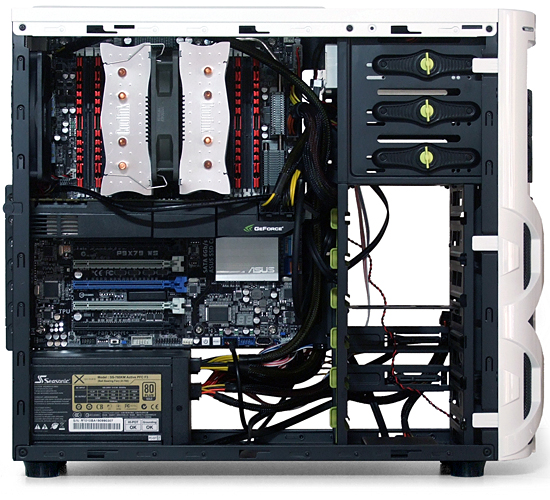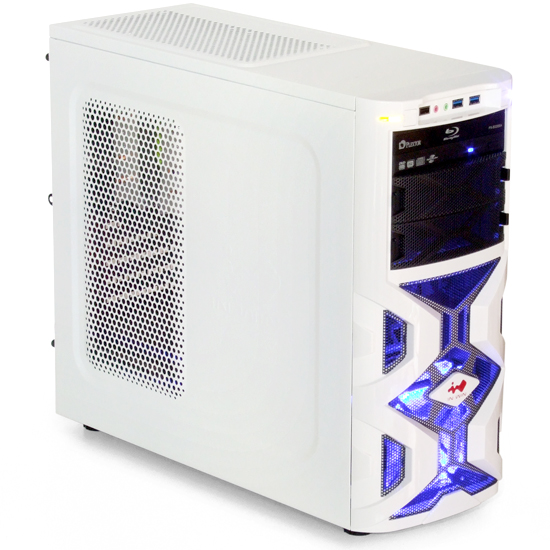Five Gaming Cases Between $80 And $120, Reviewed
Building With The In Win Mana 136
With a structural drive cage that runs from the floor to the optical bays, In Win’s Mana 136 limits maximum card length to 11.5”. There’s still enough room to hold our slightly-oversized motherboard, however.
A USB 2.0 double-row connector feeds only a single port, while the two USB 3.0 ports get the now-standard 19-pin connector. In Win supports both AC'97 and HD Audio from separate connectors on a single lead, similarly providing separate power LED connections on two-pin (standard) and three-pin (Asus) connectors.
Standoffs are pressed-into the Mana 136 motherboard tray, reducing the size of the hardware installation kit. A slot cover is included however, which might appear a little strange until we look at the back panel.
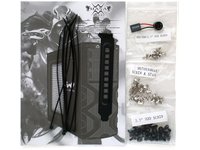
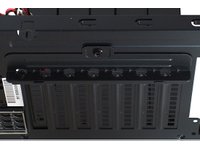
A single piece of sheet metal is intended to hold all cards in place, though each slot also supports a traditional mounting screw. Only one mounting screw is included, though, since all but one of the installed slot covers is a knock-out (the hallmark of less-expensive cases). The chassis doesn’t even include mounting screws, since drive screws of the same size have specially-shaped heads for use with keyhole-style installation slots.
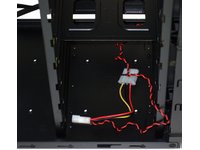
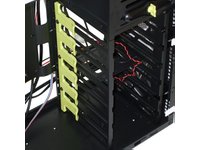
Tabs at the end of those slots grab one screw of each drive. Since the casing of a 3.5” hard drive provides half the structure of the Mana 136’s hard drive mounting system, 2.5” drives are excluded from those bays. Up to two SSDs are instead screwed into eight holes of the bottom panel.
With no top hole to run our eight-pin ATX/EPS 12 V power cable and no space above the motherboard to even place a hole, we ran the CPU power cable around the motherboard’s perimeter. We were also forced to track down a straight SATA data cable for the SSD, since our motherboard only includes right-angle cables.
The quality of In Win’s Mana 136 is found in its sturdy plastic face panel and textured white paint. Blue LED backlighting adds even more flair to this stylish case.
Get Tom's Hardware's best news and in-depth reviews, straight to your inbox.
Current page: Building With The In Win Mana 136
Prev Page Building With The Corsair 300R Next Page Building With The MSI Stealth-
Ramlethal why is it between 80 to 120 if the most expensive ones are 410 and stealth priced at 100 ?Reply -
Crashman Reply
Because it was written four years ago?19046365 said:why is it between 80 to 120 if the most expensive ones are 410 and stealth priced at 100 ?
-
Tschrom Honestly, that's probably still true today, if not even cheaper. You can find good quality Full ATX cases for around $80 now, and to spend that much ($410) on a case is just a waste of money. If you really know what you're doing, you don't need to spend anywhere near that much on a case just to house your components. I'm using a Thermaltake Versa H22 SE, which is pretty small (only a mid-ATX case and cheap at only $40) in regards to cases, yet I am able to keep everything quite cool and even made some manual customizations to the case to ensure everything fits well and works well. And I'm using only Air Cooling. Really the case you use comes down to "do the components fit, and is there adequate cooling". Even then, the cooling part can be adjusted to what is necessary with some manual customizations or even just so much as ensuring that your case fans' CFM is adequate for cooling of your currently installed components (or water, but water cooling doesn't work in my current setup so I have no opinion on that).Reply
